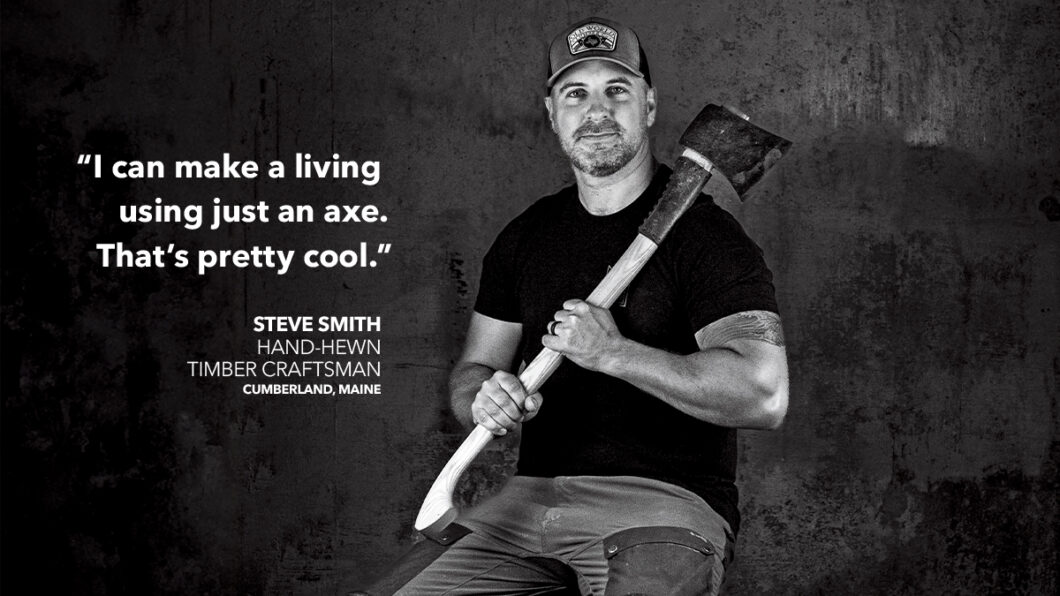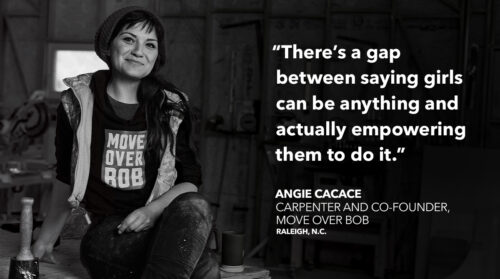You wouldn’t expect a history major and former grant writer to end up swinging an axe for a living—but that’s exactly where Steve Smith found his calling. Needing a change of pace, he stumbled on A Reverence for Wood by Eric Sloane, and the small section on hand-hewing resonated with him.
“I’ve always loved history and working with my hands,” Steve says. “As I looked at the diagrams and read the descriptions, I thought it looked satisfying, and not particularly difficult to learn.” So he ordered a Bulgarian broad axe and got to work.
Steve now owns Renaissance Timber, a company that specializes in hand-hewn mantels and beams made from reclaimed and freshly felled wood. He splits his time between hewing logs and shaping barn wood, reviving centuries-old techniques along the way. His work is a study in craftsmanship and patience, and it carries a reverence for the past.
“Eventually, I realized that about 50% of success in hand-hewing is log selection. If you choose the right one, you can work twice as fast and end up with a much better product.”
– Steve Smith, Hand-Hewn Timber Craftsman
“I love the character of old barn wood—the nail holes, the checking, the scoring marks, the patina,” he says. His process is intentionally minimal: Clean the wood gently with a wire brush, do some light sanding, preserve as much of the patina as possible, and finish it with a coat of Briwax to protect its natural character.
Working with freshly felled logs brings its own set of challenges. Living in Maine, the most forested state in the country, Steve has access to a rich supply of trees. But early on he learned that hewing isn’t just about technique; it starts with the tree.
“When I first started, I was slow—not just because I was learning how to hew, but because I was picking random logs and just banging away,” he admits. “Eventually, I realized that about 50% of success in hand-hewing is log selection. If you choose the right one, you can work twice as fast and end up with a much better product.” In his world, being picky is a necessity, not a luxury.
His clients appreciate the care that goes into every beam. Many discover his work through social media, and perhaps surprisingly, nearly half are millennials. “They’re drawn to the idea of history—of tapping into our agricultural heritage,” he explains. In this way, Steve Smith is keeping history alive.
— Jennifer Morris, editorial assistant. Photo by Stacie Maddox.
Keep Craft Alive is our campaign celebrating those who have chosen to passionately pursue a career in design, building, and remodeling. Find out more and show your support by visiting KeepCraftAlive.org, and use #KeepCraftAlive to share your passion for the cause.
|
RELATED STORIES






